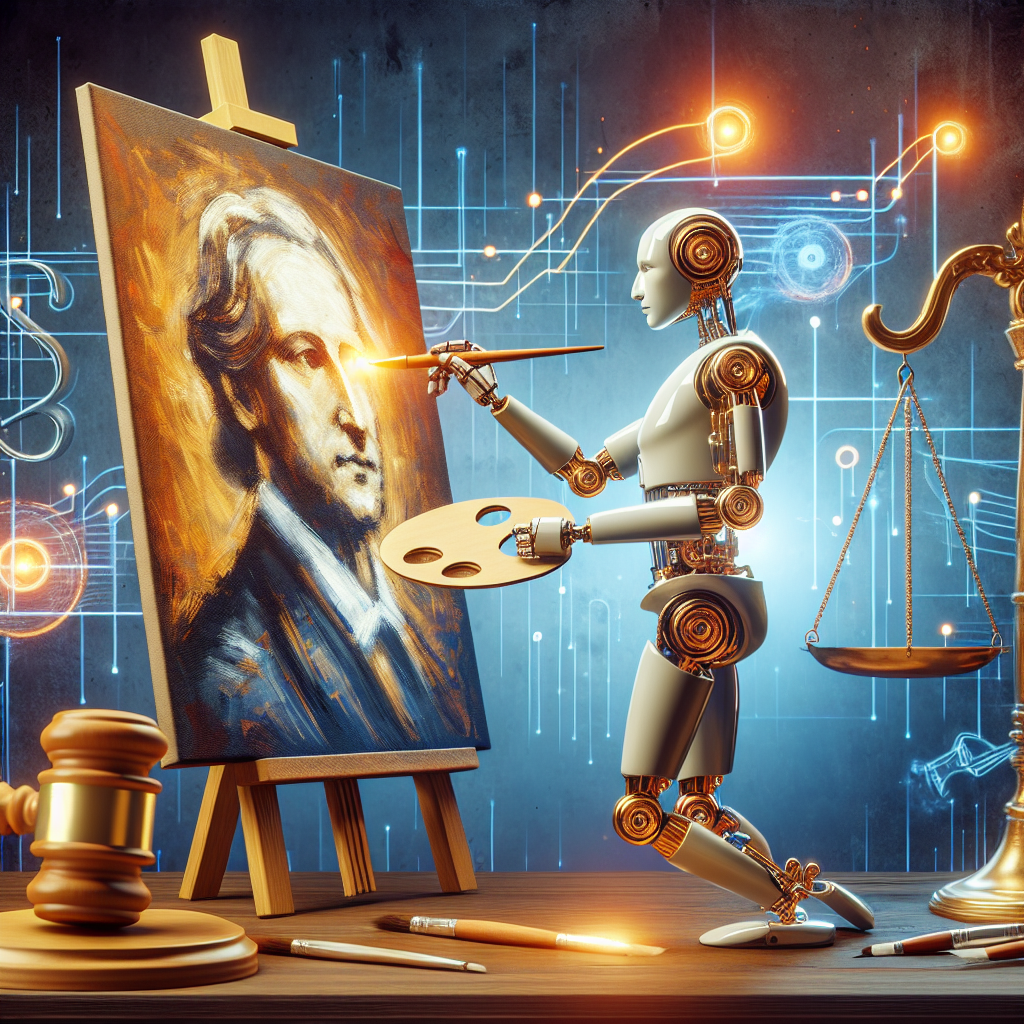The Rise of AI-Generated Art: A New Creative Frontier
The creative landscape is undergoing a dramatic transformation as artificial intelligence emerges as a powerful tool for artistic expression. However, this technological revolution has sparked intense debates and legal battles across major industries, challenging traditional notions of copyright, authorship, and creative ownership. From visual arts to music and literature, the implications of AI-generated content are reshaping the creative sector’s foundation.
Understanding AI Art and Its Impact on Creative Industries
AI-generated art encompasses a wide range of creative works produced through machine learning algorithms and neural networks. These sophisticated systems analyze vast databases of existing artwork, learning patterns and styles to generate new, original pieces. The technology has evolved rapidly, producing increasingly sophisticated and commercially viable works that blur the lines between human and machine creativity.
Key Sectors Affected by AI Art Copyright Disputes
- Visual Arts and Digital Media
- Music and Sound Design
- Literature and Publishing
- Gaming and Entertainment
- Advertising and Marketing
The Copyright Conundrum: Legal Challenges and Precedents
The emergence of AI-generated art has created unprecedented challenges for existing copyright frameworks. Traditional copyright laws were designed with human creators in mind, making it difficult to address questions of ownership when artificial intelligence is involved in the creative process.
Critical Legal Questions Emerging
- Who owns the rights to AI-generated artwork?
- Can AI-created works be protected under current copyright laws?
- How should derivative works be handled when AI is involved?
- What constitutes fair use in the context of AI art?
Major Industry Disputes and Landmark Cases
Several high-profile cases have emerged as industries grapple with the implications of AI-generated art. These disputes have highlighted the need for clearer legal frameworks and industry standards.
Notable Copyright Disputes
One significant case involved a major tech company’s AI system that created artwork by analyzing millions of copyrighted images. Artists and content creators filed lawsuits, claiming unauthorized use of their work in training the AI model. This case highlighted the complex intersection of intellectual property rights and machine learning technology.
Music Industry Challenges
The music industry has faced similar challenges with AI-generated compositions. Several record labels and musicians have raised concerns about AI systems trained on copyrighted music, leading to debates about originality and creative rights in the digital age.
The Artist’s Perspective: Creative Communities Respond
Professional artists and creative communities have expressed mixed reactions to AI-generated art. While some embrace the technology as a new creative tool, others view it as a threat to traditional artistic practices and livelihoods.
Key Concerns from Creative Communities
- Economic impact on professional artists
- Devaluation of human creativity
- Ethical considerations in AI training data
- Fair compensation for artists whose work trains AI systems
Industry Solutions and Adaptation Strategies
As the debate continues, various industries are developing strategies to address these challenges and establish new frameworks for the AI art era.
Emerging Solutions
- Development of AI art certification systems
- New licensing models for AI training data
- Industry-specific guidelines for AI art use
- Blockchain-based authentication systems
Legal Framework Evolution and Policy Recommendations
Lawmakers and policy experts are working to adapt existing copyright laws to address the unique challenges posed by AI-generated art. Several key recommendations have emerged from these discussions.
Proposed Legal Solutions
- Updated copyright legislation specifically addressing AI works
- Clear guidelines for AI training data usage
- New frameworks for determining authorship
- International standards for AI art copyright protection
The Future of AI Art and Copyright
As technology continues to evolve, the relationship between AI art and copyright law will likely become more complex. Industries must adapt to these changes while protecting creative rights and fostering innovation.
Future Considerations
- Integration of AI art in traditional creative workflows
- Development of new business models
- Evolution of creative collaboration between humans and AI
- Emergence of specialized AI art marketplaces
Impact on Small Creators and Independent Artists
The rise of AI-generated art has particularly affected independent artists and small creative businesses. These creators face unique challenges in protecting their work and competing in an increasingly AI-influenced market.
Challenges for Independent Creators
- Market competition with AI-generated content
- Protection of original works
- Adaptation to new technologies
- Financial sustainability in changing markets
Educational and Training Implications
The emergence of AI art has significant implications for art education and professional training. Educational institutions and industry organizations are adapting their curricula to address these changes.
Educational Adaptations
- Integration of AI tools in art education
- Copyright law education for artists
- New courses on AI art creation and ethics
- Professional development in AI art technologies
Conclusion: Balancing Innovation and Rights Protection
The copyright disputes surrounding AI-generated art represent a crucial turning point in the creative industries. As technology continues to advance, finding the right balance between innovation and rights protection becomes increasingly important. The resolution of these disputes will shape the future of creative expression and set important precedents for the integration of AI in artistic practices.
Key Takeaways
- The need for updated legal frameworks
- Importance of protecting both human and AI-generated creativity
- Ongoing evolution of creative industries
- Crucial role of stakeholder collaboration
As we move forward, the relationship between AI art and copyright law will continue to evolve, requiring ongoing dialogue between creators, technology companies, legal experts, and policymakers to ensure a fair and sustainable future for all stakeholders in the creative industries.

